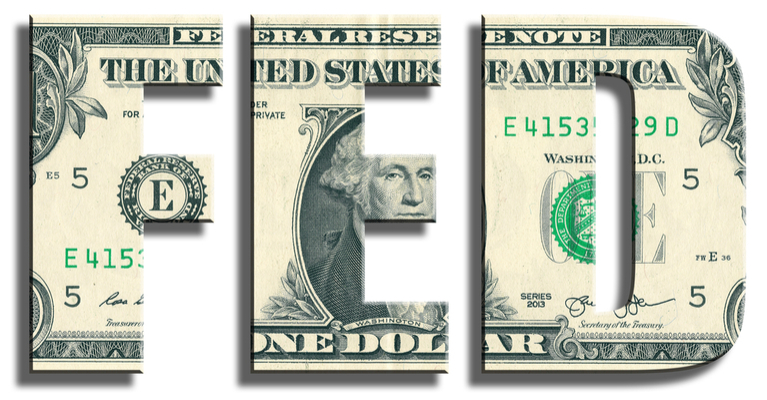As was widely expected, the Federal Reserve recently raised interest rates for the fourth time in 2018. What was a surprise to some market observers was the Fed’s hawkish tone, which indicates multiple rate hikes could be in the offing in 2019.
Rising interest rates are not always a negative thing, however, particularly if economic growth and inflation are supportive of those higher borrowing costs. While U.S. economy has been sturdy this year, an array of asset classes have been stymied by rising rates. Consumers can also be pinched by rising rates.
The Fed’s benchmark “rate is closely tied to consumer debt, particularly credit cards, home equity lines of credit and other adjustable-rate loans,” according to CNBC. While rising rates are not always greeted warmly, some exchange-traded funds (ETFs) can help investors benefit from Fed hawkishness.
Here are some of the best ETFs to consider if rates continue climbing in 2019.
ProShares Equities for Rising Rates ETF (EQRR)
Expense ratio: 0.35% per year, or $35 on a $10,000 investment
The ProShares Equities for Rising Rates ETF (NASDAQ:EQRR) is one of the best ETFs for investors that want to remain engaged with equities in rising rate environments. EQRR follows the Nasdaq U.S. Large Cap Equities for Rising Rates Index, which is designed to outperform traditional equity benchmarks, like the S&P 500, in rising rate environments.
EQRR is a passive index strategy and as such does not rely on hedging mechanisms as some fixed-income ETFs do to combat higher borrowing costs.
Rather, EQRR tilts toward individual stocks and sectors that have traditionally performed well when interest rates climb. Today, EQRR devotes over 53% of its combined weight to financial services and energy stocks, sector allocations that have hindered the fund’s performance in 2018. Conversely, EQRR could be one of the best ETFs if the value factor legitimately comes back into style.
SPDR S&P Regional Banking ETF (KRE)
Expense ratio: 0.35% per year
The old expression “past performance does not guarantee future” returns applies to the SPDR S&P Regional Banking ETF (NYSEARCA:KRE) in 2018. Traditionally one of the best ETFs for rising rate environments, KRE has been drubbed this year. The largest regional bank ETF by assets is disappointing investors in epic fashion this year with a loss of nearly 22%.
The financial services sector is officially in a bear market and that includes regional bank names. A case can be made that some of the best ETFs for rising rates, such as KRE, have actually been hurt by the Fed hiking too quickly.
“But that tailwind turned into a headwind when rates reached 1.5 percent to 2 percent because that caused deposit costs to rise, which lessened the benefits of higher interest rates,” according to Financial Advisor Magazine.
KRE could be one of the best ETFs in 2019, but a lot needs to go right for that to play out.
SPDR Bloomberg Barclays 1-3 Month T-Bill ETF (BIL)
Expense ratio: 0.1359% per year
The SPDR Bloomberg Barclays 1-3 Month T-Bill ETF (NYSEARCA:BIL) is one of the best ETFs for ultra-conservative investors to consider when the Fed is hawkish. BIL, which tracks the Bloomberg Barclays 1-3 Month U.S. Treasury Bill Index, is essentially an alternative to cash, but that is not a bad thing in the current climate.
Year-to-date, BIL is essentially flat, making it one of the best ETFs relative to traditional equity investments. Plus, BIL’s option-adjusted duration is just 0.11 years, making it less sensitive to higher rates than longer-dated bond ETFs.
BIL is also one of this year’s best ETFs in terms of new assets added. The fund has $7.47 billion in assets under management, of which $5.81 billion has flowed in this year.
IQ Short Duration Enhanced Core Bond U.S. ETF (SDAG)
Expense ratio: 0.36% per year
One of the best ETFs for rising rates is also one of the newest. The IQ Short Duration Enhanced Core Bond U.S. ETF (NYSEARCA:SDAG) is just a few days old, but that does not diminish the fund’s ability to portfolios as rates rise.
This new ETF follows the IQ Short Duration Enhanced Core Bond U.S. Index and uses an ETF of ETFs structure, meaning its holdings are other ETFs. SDAG’s current lineup is comprised of funds focusing on short-term Treasuries, floating rate notes and short-term corporate bonds.
“Most other short duration bond ETFs use amount of debt outstanding to weight the underlying bonds and thus the sectors,” IndexIQ Chief Investment Officer Salvatore Bruno said.
“With the potential to provide positive performance relative to the US taxable credit/government index while maintaining low duration impact, SDAG can be a core ETF holding in the short duration bond asset category.”
iShares Interest Rate Hedged Corporate Bond ETF (LQDH)
Expense ratio: 0.24% per year
The iShares Interest Rate Hedged Corporate Bond ETF (NYSEARCA:LQDH) is an actively managed ETF that uses the iShares iBoxx $ Investment Grade Corporate Bond ETF (NYSEARCA: LQD) with short positions in interest rate swaps. LQD is the largest corporate bond ETF, which helps bolster LQDH’s liquidity profile.
LQDH is one of the best ETFs for investors looking to manage rate risk while still maintain a decent income stream. This corporate bond ETF has an effective duration of just 0.12 years (LQD’s duration is 8.38 years) and a 30-day SEC yield of 3.47%. Plus, LQDH has a slightly lower standard deviation than its unhedged counterpart.
Nearly half of the corporate bonds accessible via LQDH are rated BBB, which means the fund could see some of its components lose their investment-grade status if economic conditions deteriorate in 2019.
As of this writing, Todd Shriber does not own any of the aforementioned securities.

